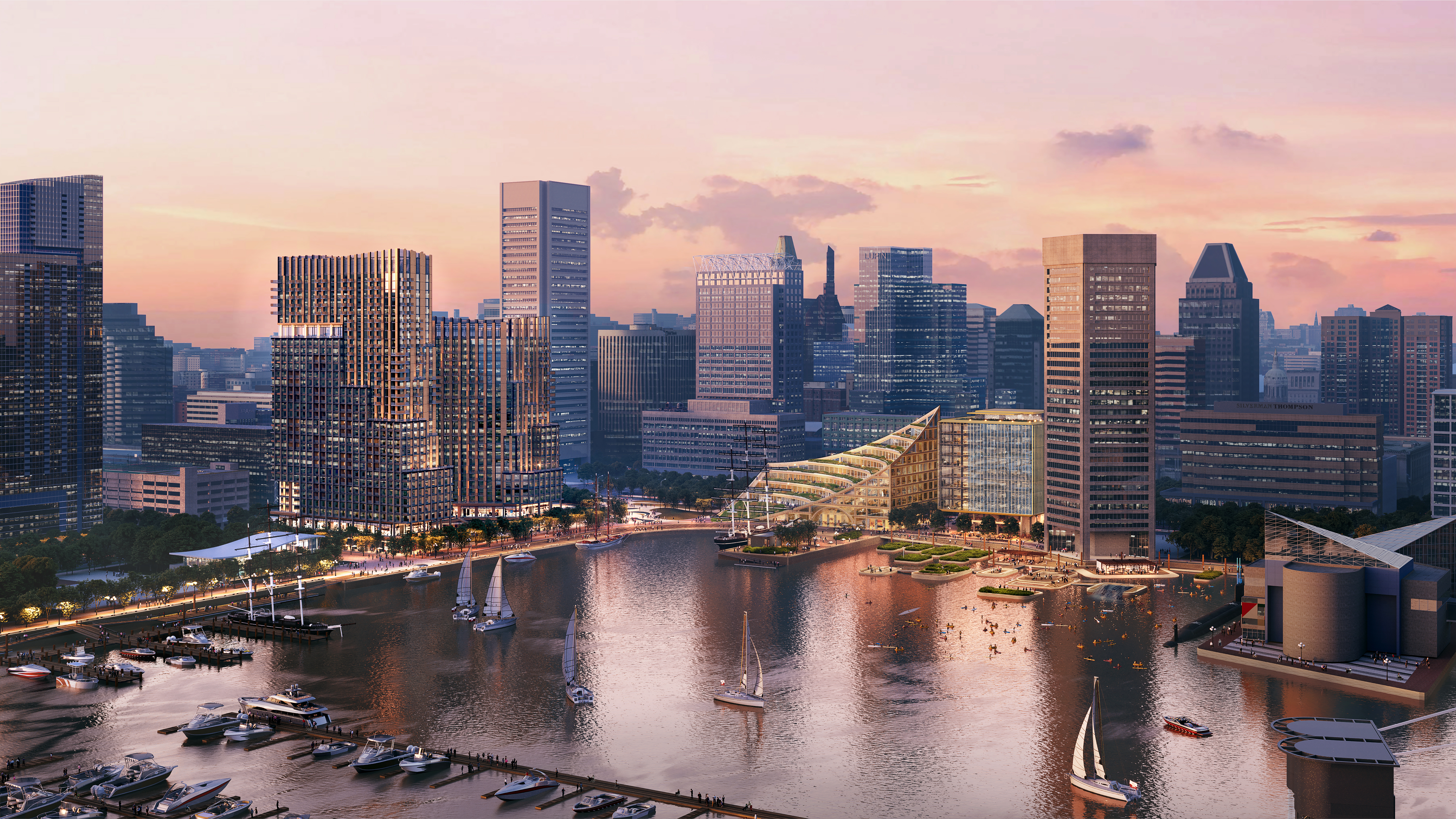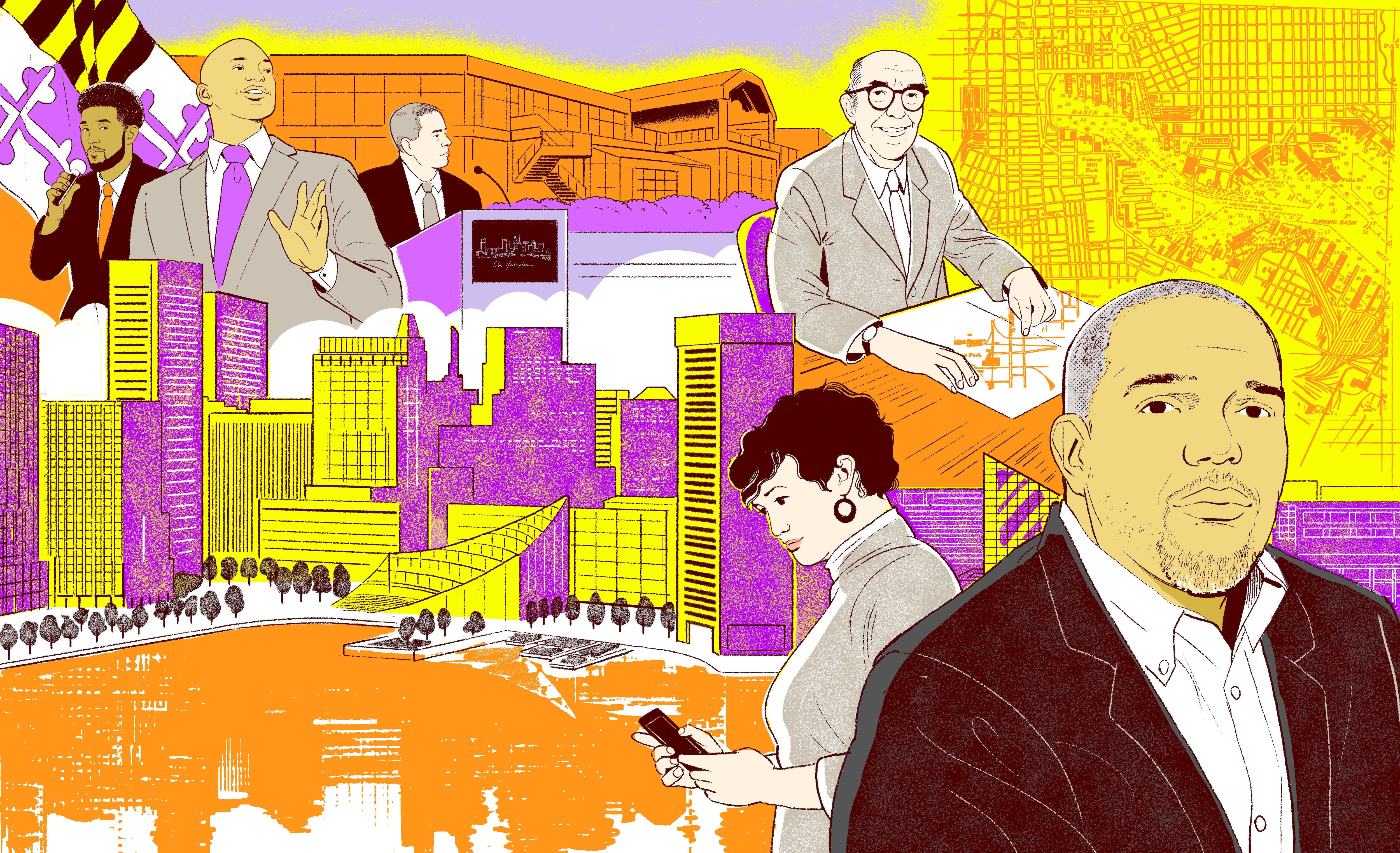If you haven’t been paying close attention to the news about Harborplace, now is a good time to get caught up. It started decades ago, when Baltimore’s Inner Harbor was revitalized with Harborplace, two shiny pavilions filled with shops and restaurants that were big draws.
The development, constructed by The Rouse Company, has fallen in stature as tenants have moved out and tourists and local residents alike have stopped flocking to the pavilions.
But now, a local developer has ambitious goals to re-imagine Baltimore’s waterfront by re-imagining Harborplace. It’s projected to cost nearly a billion dollars.
Such a big project has countless moving parts and hard-to-understand processes. We’ve compiled some commonly asked questions and provided answers.
Who owns Harborplace?
Harborplace is owned by MCB Real Estate, a Baltimore-based investment management firm that operates and develops commercial and residential properties. Peter Pinkard and P. David Bramble are managing partners and co-founders of the firm; Bramble has been the face of the company and especially of the Harborplace project.
Which land is slated for development?
The Harborplace plan, if fully realized, would radically transform Baltimore’s Inner Harbor. The waterfront area, stretching more or less from the National Aquarium to the Maryland Science Center, would be revamped. It’s not a huge space — less than half a mile long, according to Google Earth — but the plans call for adding nearly 5 more acres of public space and two 200,000 square-foot commercial buildings.
Read More
This story is part of a deep dive into the future of Harborplace
While the distinctive World Trade Center Baltimore tower would not be changed, just about everything else would. And yes, the plan does include razing the existing pavilions.
When did Bramble and MCB become the developer?
The company reached an agreement to acquire Harborplace in April 2022, and the sale was finalized in December that same year.
MCB acquired the property out of receivership, a court-ordered process that started in 2019 after a subidiary of Harborplace’s previous owner, New York-based Ashkenazy Acquisition Corp., was sued by a lender over a delinquent loan. A judge had to approve the sale to a qualified owner.
The property had been owned by Ashkenazy since 2013.
Who is P. David Bramble?
P. David Bramble began his career decades ago with “small deals,” like buying and selling individual homes. He’s the son of a church leader and journalist, and grew up in West Baltimore. His parents owned The Baltimore Times, a community newspaper.
Other MCB properties include The Rotunda in Hampden, Yard 56 across from the Johns Hopkins Bayview Medical Center, Northwood Commons near Morgan State University and a large housing development in Reservoir Hill on North Avenue.
This story is part of a deep dive into the future of Harborplace
Who is paying for Harborplace?
Bramble has said it would cost an estimated $400 million in public funds for the city to build out promenades and public spaces and reconfigure the roads around Harborplace. His company has said it plans on pursuing state and federal funds to pay for the public space and promenade improvements, and state money for roadway work.
The rest of the redevelopment would be privately funded and financed, according to MCB, for as much as $500 million.
That creates a total price tag of just under $1 billion.
How long is the Harborplace development going to take?
The short answer is a long time. Before demolition and construction can start, the project will require amendments to the city charter approved by voters in November. Bramble has said it will take “years” to fully overhaul the complex.
Here’s a breakdown of the next steps.
What’s the latest in the approval process?
A City Council committee approved a package of bills in mid-February to advance the changes necessary for the Harborplace redevelopment. All three bills sailed through, including one that puts a City Charter amendment on the ballot for voter approval n November.
Can I see the Harborplace plans?
Yep. MCB has a fairly comprehensive website to show off the plan designs. Some things we at The Banner have noticed include the unique sail-shaped building, hundreds of trees and yes, even a gondola across the water.
Is it true the Harborplace plans change traffic?
Yes, the plans would change traffic around the harbor. Bramble has pledged to narrow Pratt Street, and the plans include tree-filled medians and bike lanes. The plans as they exist reduce the number of traffic lanes on Pratt and Light streets.
On its website, MCB says, “Changes in commuter behavior can be complicated, but a few extra minutes to get through downtown is a small price to pay for an amazing, pedestrian oriented streetscape which will both drive tax revenue” for the city and state.
I love and/or hate the plans! How can I let someone know?
MCB has a feedback form on its website, here: https://www.ourharborplace.com/feedback
Questions include what excites and worries you about the project and what aspects of Harborplace redevelopment are most important to you.







Comments
Welcome to The Banner's subscriber-only commenting community. Please review our community guidelines.